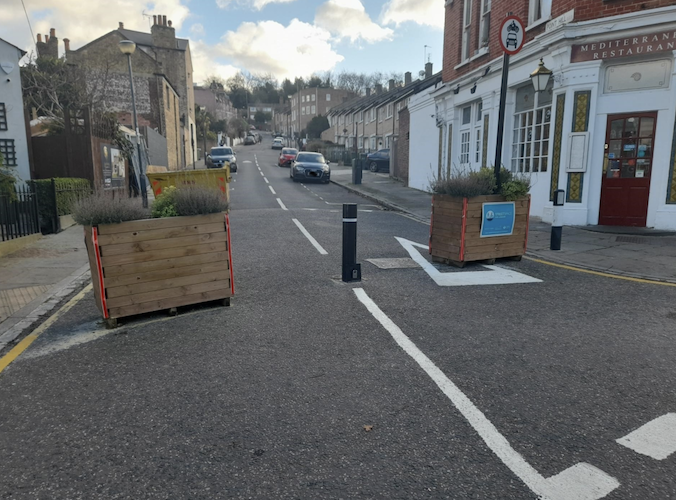Greenwich Council is set to scrap a controversial low traffic zone after locals fumed about road blocks halting progress across the city. The divisive scheme controlled traffic flow and used barriers and on-street cameras to fine motorists who did not obey the rules.
Supporters lauded the low traffic neighbourhood (LTN) areas when they were introduced in August 2020 on a trial basis, saying they created safer roads and reduced congestion. But opponents said they displaced traffic elsewhere and did not work in the interests of all residents.
Council officers have recommended the west Greenwich LTN trial ends on Friday, but added it should be left open for cabinet members to develop alternative LTNs. Sarah Merrill, the council’s cabinet member for transport, is expected to sign off the proposals.
The change means residential roads previously blocked off motorists should be accessible to through traffic again. Reaction from local people varied. The Green Party’s Matt Browne, who contested a 2021 council by-election in west Greenwich, said: “Low traffic neighbourhoods are essential if Greenwich Council is to meet its own 2030 traffic reduction targets – the removal of the Hills and Vales LTN and the failure to consider new LTNs betrays both residents and the council’s promises.
“We urgently need a Greenwich-wide traffic reduction and safety strategy, drawn up through consultation with residents, linking LTNs in a coordinated way to reduce traffic, rather than just moving it. Worsening pollution, the resulting dangers to residents’ health and the climate emergency won’t wait for Greenwich Labour. We need meaningful action now.’’
Local group One Greenwich, which has campaigned against LTNs, said: “We are delighted Royal Greenwich has reversed its barmy decision to install LTNs permanently across west Greenwich. Not only did this impact residents living on the boundary roads, but also across east Greenwich, resulting in additional pollution and congestion in other residential areas, many containing an abundance of social housing.”
They added: “Despite supporters’ best efforts in attempting to game the consultation, from completing it on behalf of three-month-old babies, to forcing leaflets in support of LTNs onto visitors from outside the area, it’s true to say it wasn’t going to end well for them. Hopefully, we can look to finding a solution equitable for all, not just the privileged few.”


There is no hard evidence that LTNs in general and this West Greenwich traffic management scheme in particular, reduce traffic. The Council’s own Local Implementation Plan described any further change to walking and cycling in the area as unlikely due to historic high levels. People taking vital, often medium distance, journeys, including local doctors and carers – as well as trades such a plumbers, lost vital time in traffic queues, as well as earnings. Those of us who campaigned against the scheme have criticised the fake environmentalism linked with the schemes and believe we have convinced Greenwich to behave more democratically in terms of consultation not only with all affected residents, but across the Borough.
We don’t want upper middle class nimbies closin off roads dahn our gaff.